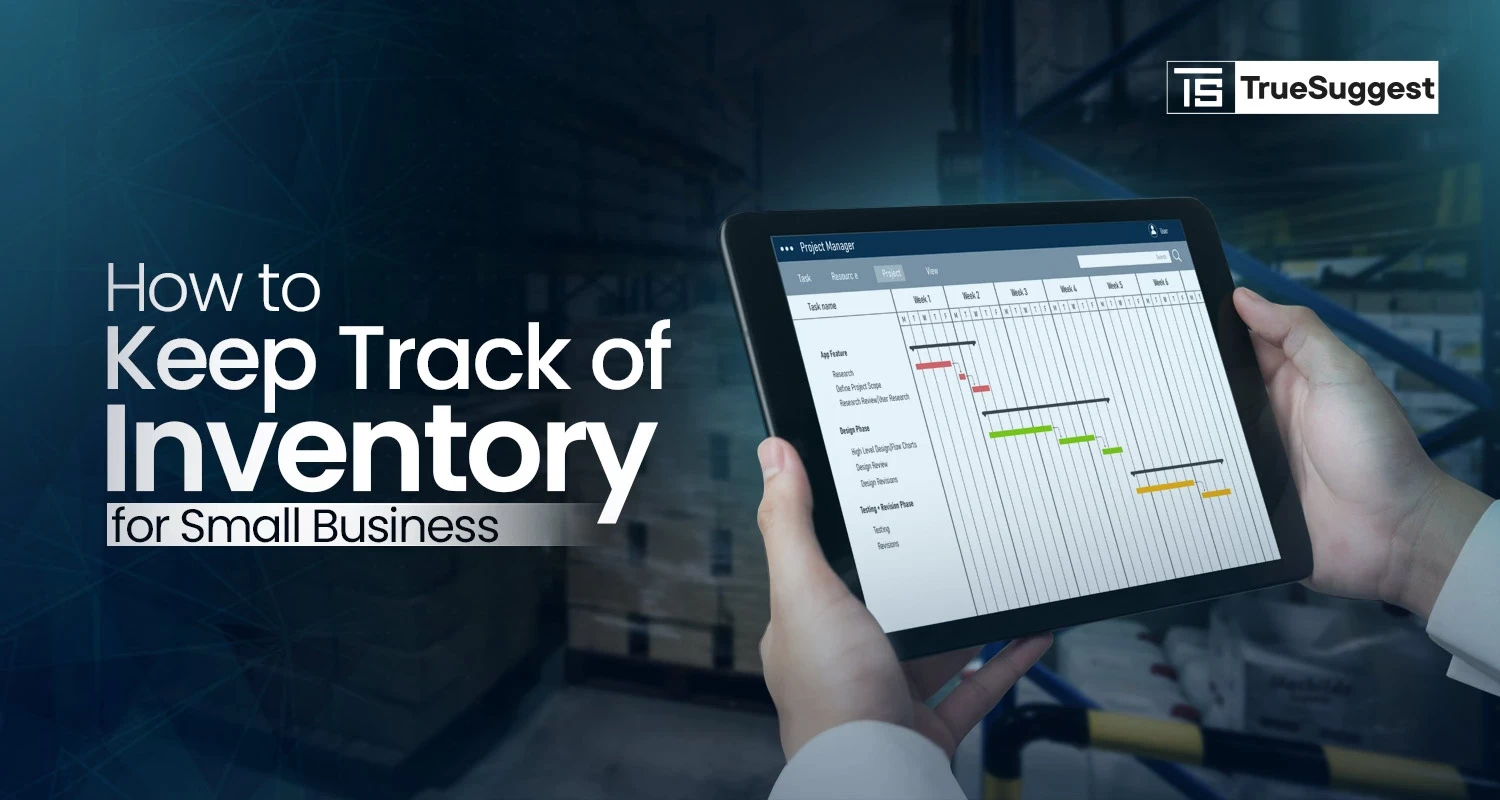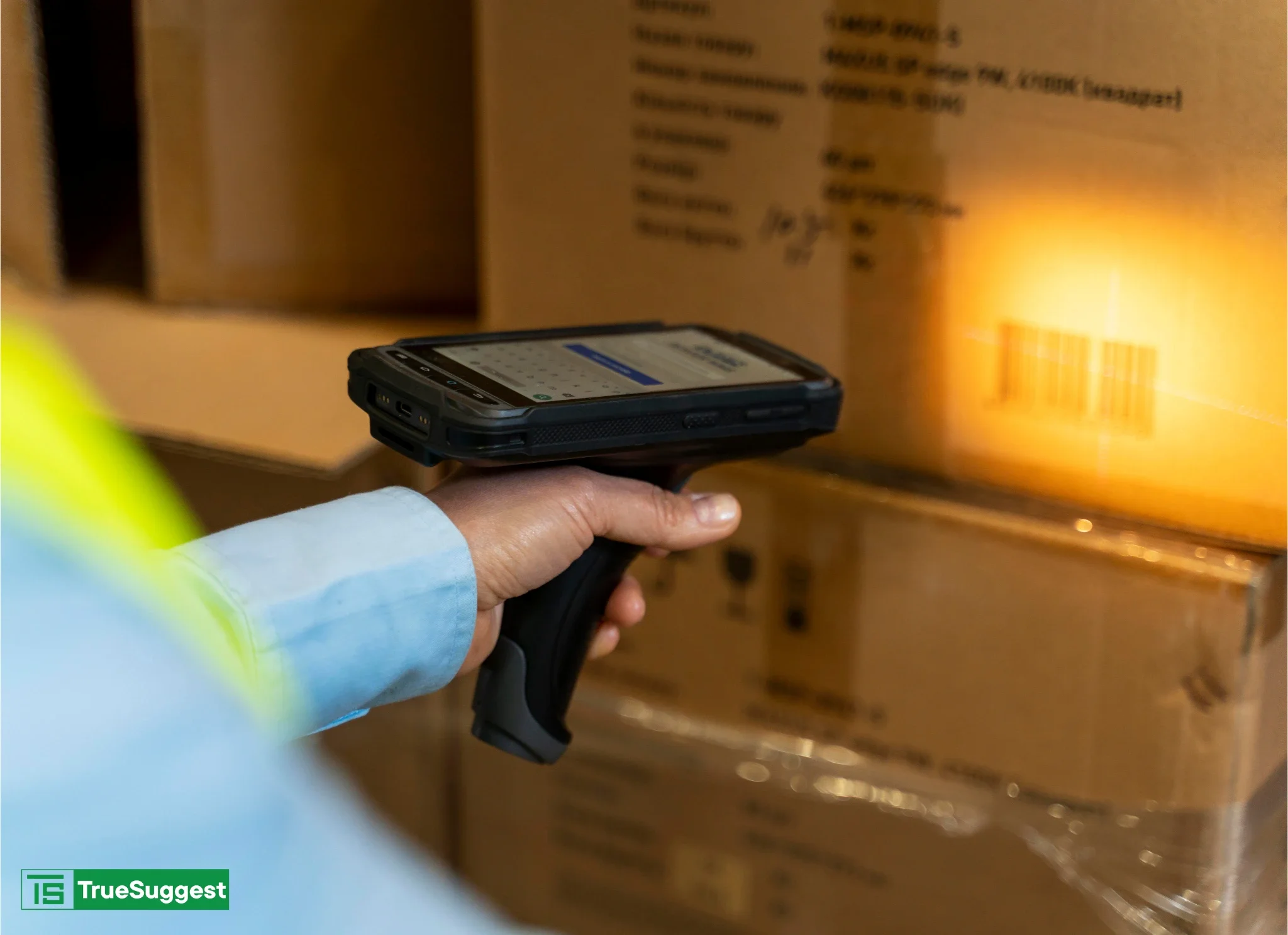


Inventory management is an inseparable part of a healthy business. It's a continuous process of controlling the stock of goods and materials. Proper inventory management helps the supply chain to remain stable. It’s a crucial thing for the uptrend of your business.
In today's marketplace, inventory has a direct impact on businesses. Notably, the small market suffers the most from not controlling its inventory properly. In this blog, we will guide you on how to keep track of inventory for small businesses.
Inventory management is a powerful process for controlling a business's stock. It enables owners to track everything related to products and materials, such as producing, ordering, storing, utilizing, and selling.
Functional inventory management ensures that the right products are available at the right moment in the right quantity. It also plays an important role in minimizing excess stock and waste. Furthermore, proper management can fulfill customer demand, which is really helpful for businesses.
Inventory refers to goods and materials a business holds for production, sale, or daily operations. It's essential to have enough materials in hand to go to production. On the other hand, having excessive materials in stock is unhealthy for business. That means standard inventory always carries a calculative amount of materials.
Inventory is mainly categorized into four categories. They’re raw materials, work-in-progress (WIP), finished goods, and maintenance, repair, and operations (MRO). Let’s have detailed ideas about these categories.
Raw materials are the basic, unprocessed, or slightly processed materials used to produce products. They are the foundation of the manufacturing process and the first stage of the production cycle. A manufacturing company wouldn't be able to produce products without sufficient raw materials. Besides, without raw materials, no business can fulfill their customer demands or manufacture products.
However, raw materials also have two types, such as—
Direct raw materials: Raw materials are mainly directly used in the production process. For example, a denim manufacturing company needs fabric, thread, zipper, etc. Similarly, furniture makers need wood, while steel is a raw material in the automobile sector.
Indirect raw materials: Indirect raw materials function as supportive materials. They support the production process rather than become part of the finished product. For example, lubricants are key materials for machinery, adhesives, or cleaning agents.
The work-in-progress inventory indicates those items that are being manufactured but are not yet complete.Indeed, WIP is a bridge between the gap of raw materials and finished goods. It's a short-term production cycle. WIP items are neither raw materials nor finished products.
For example, WIP means a smartphone circuit board awaiting final assembly in the electronics manufacturing industry. In the textile industry, it's like fabric being dyed or stitched into garments. These things vary depending on the industry or production sector.
Products that are completely ready to sell are called finished goods. These items are no longer in production and are awaiting distribution or purchase. Finished goods are the ultimate result of the overall manufacturing process. In fact, they're a key component of the supply chain.
Which things are finished goods? What Do they look like? Well, if we talk about electronics items, smartphones, laptops, and amplifiers are finished goods. For the apparel category, they're dresses, shoes, jackets, etc.
MRO refers to Maintenance, Repair, and Operations. They work with supplies, tools, and equipment to maintain operations, repair machinery, and support production processes. These are essential for smooth business operations. However, they don't contribute directly to the production of finished goods.
MRO inventory consists of lubricants, screws, nuts, bolts, etc. Wrenches, screwdrivers, and diagnostic equipment are part of this. Also, safety goggles, gloves, printer paper, and ink cartridges provide support to maintain the supply chain.
Inventory tracking is mandatory for any business. It's more important when you're managing a small business. Accurate inventory tracking helps businesses to manage resources effectively. In the upcoming parts of the blog, we will learn inventory tracking for small businesses.
Tracking inventory is a time-consuming matter. In the same way, maintaining retail store stock management is challenging. However, there are a few tools and techniques available to make it easy and convenient. Solid and sound inventory management helps businesses use their resources efficiently. It also reduces costs and improves customer satisfaction.
There are numerous tracking methods based on different strategies and business types. But what is the best way to manage inventory? Let’s find it out—
Inventory tracking methods offer various options. However, not every method will suit all types of business. That’s why choosing the right method is essential for the best outcomes.
![]()
Manual inventory tracking is a basic and traditional tracking practice. Now, how to keep track of inventory manually? It's a simple way of keeping track of inventory using pen and paper. Most of the time, the manual approach relies on physical data. Someone may favour spreadsheets to input data, which requires minimal technology.
Manual inventory tracking works in multiple ways. The physical counting process requires regular stock counts, while many update the inventory in every transaction.
Manual tracking has many disadvantages. Such as:
However, small businesses can continue with that if they have limited products in their inventory. It’s an ideal option for those who don’t have enough budget to expend extra on inventory management.

A barcode system is a broadly used inventory tracking method. It's an automated process that involves scanning barcodes on products. This method can reduce errors and speed up inventory operations.
Barcode is a technology where each barcode contains a unique identity code. Barcode scanners can easily detect the code and show the product's results, like name, price, and stock quantity.
It has few functionalities which improve business transparency. Such as:

Inventory management software is a digital tool for tracking and managing inventory. It's an advanced solution to stay away from errors and inspect real-time data in one place. Inventory software can monitor stock levels and provide data on selling items. This helps the owner decide by analyzing the most and least-performing products.
Inventory software uses a central database to store inventory items, stock locations, and pricing information. At the same time, this system is integrated with other systems such as accounting software, Point of Sale (POS), and e-commerce platforms. Invest in inventory management software will be worthwhile if someone plans the business for the long term.
On the other hand, inventory software is a bit more costly than other methods. It's a system-dependent method, so a good initial investment is required. Also, users need to learn a few things to conduct smooth operations.
Apart from these methods, there are other inventory management methods available. However, they're not very suitable for small businesses. For example, RFID (Radio Frequency Identification) is a modern inventory management system. It's a very smart and protective method for business. Besides, it's costly for small businesses and requires complex setup knowledge.
Accurate and detailed inventory management is crucial to maintaining the flow of business. It enables them (business owners) to gather all of the stock data in one place. For accurate stock levels, measurement and inventory management are mandatory. It ensures stock fulfillment, and nothing is out of stock.
To keep inventory records, owners must rely on a strong inventory management. An ideal inventory setup can improve the business's cash flow. It helps to avoid overinvestment and allocate resources carefully.
Decision-making is the core point of a business. It’s difficult to make the right decision without having detailed information about every corner of the business. Inventory management makes that job easy by providing detailed data and information.
Keeping all of these aside, what’s the most important thing about a business? Different people can answer differently on that. However, the truth is customer satisfaction is one of the key factors of business. Inventory management improves customer experience by ensuring popular items are always in stock.
Ans: Improving inventory management requires both effort and organized capabilities. Optimized inventory can save money and time by maintaining accurate stock. Introducing the latest technology to the business can provide the highest possible output. Besides, regular stock audits let the customer have their preferred items available.
Ans: Not all inventory software is adaptable to all types of business. Inventory software should be chosen carefully by knowing the needs and business type. Inventory software also varies based on business size and industry. However, QuickBooks Commerce is one of the best inventory management softwares with nearly all features.
Keeping track of inventory is important for small businesses. Inventory tracking ensures that stock is under control and that products are available. To make this process easy, business owners use different methods such as manual tracking, barcode systems, inventory software, RFID (Radio Frequency Identification), etc.
Additionally, conducting regular audits and analyzing stock and sell data helps the business identify its best and worst-performing products. Ensuring the ready stock of demanding products helps gain customers' trust and loyalty. On the whole, inventory management is necessary for any business including small businesses.